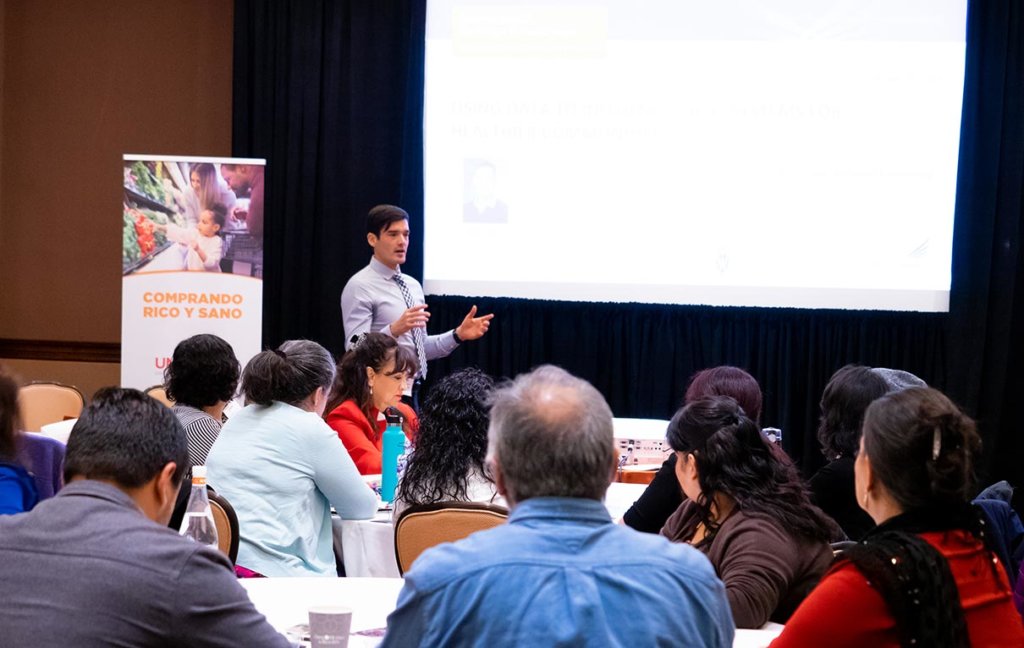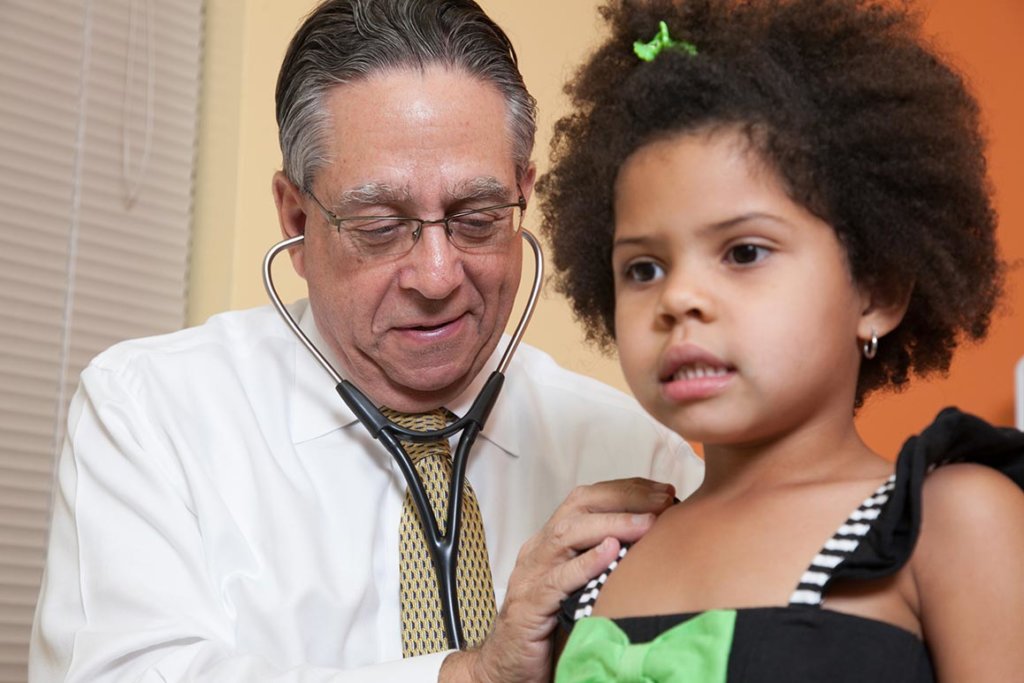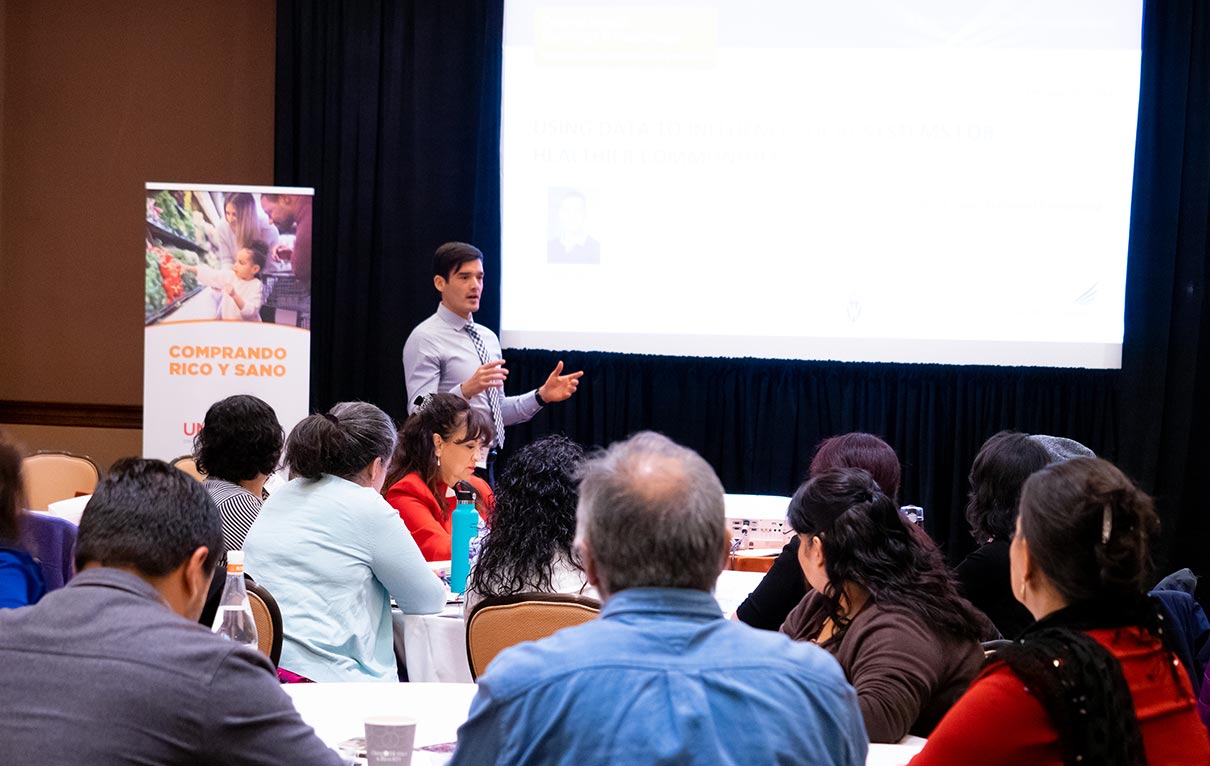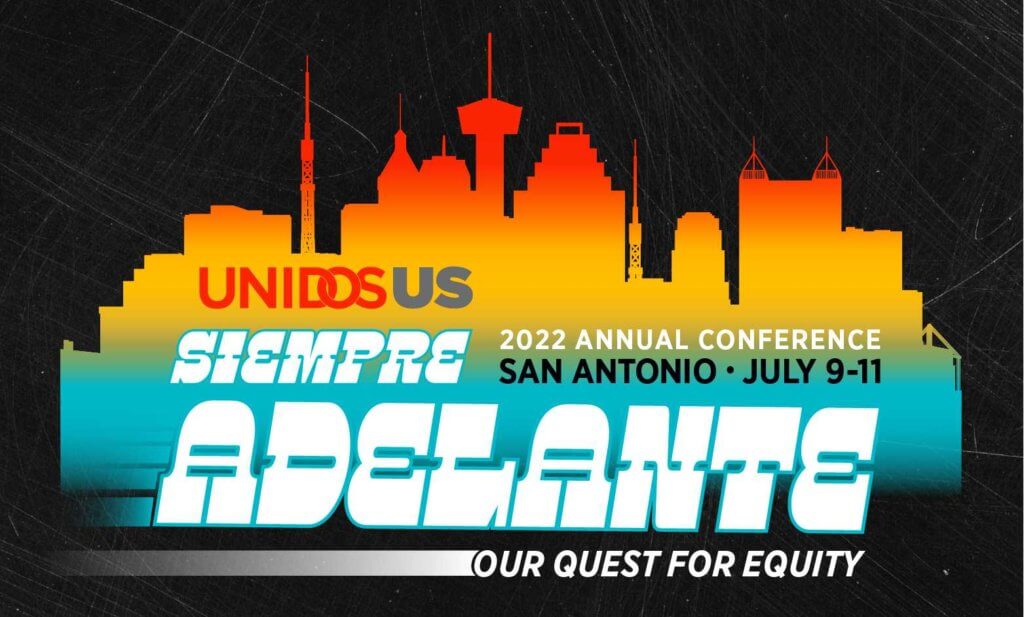How data is being used to fight for health equity for all
Even though we might not always realize it, data is all around us. And although there are definitely some dangers to the overwhelming amount of data that is out there, it can also be a powerful tool for creating change and ensuring health equity.
National programs like UnidosUS’s Comprando Rico y Sano—a promotor de salud-led initiative that addresses food insecurity and instills healthy eating and shopping habits among Latinos—use data to improve knowledge and behaviors around healthy shopping and healthy eating. This data helps us and our subgrantee Affiliates to reduce hunger among the Latino community, through culturally sensitive nutrition education and SNAP enrollment assistance.

Currently implemented by 26 community-based organizations across 13 states and the District of Columbia, promotores de salud offer various nutrition education activities, which are complemented with SNAP education and enrollment assistance for eligible Latinos, helping them maximize their monthly benefits for healthier nutrition. It’s all part of our work to ensure health equity for all Latinos.
Keep up with the latest from UnidosUS
Sign up for the weekly UnidosUS Action Network newsletter delivered every Thursday.
This month, we convened these promotores de salud in Phoenix, Arizona, where, among other things, we discussed a data tool that allows people to look up their county or state and find a breakdown of health statistics in their area. One of the key aspects of the data are the breakdowns of percentages for different racial and ethnic groups.
“Health equity means that everyone has a fair and just opportunity to be as healthy as possible,” said Justin Rivas, Network Strategist at County Health Rankings and Roadmaps, who presented the tool. “The way you tailor the work you’re doing—that’s what health equity is.”
The County Health Rankings and Roadmap program is a collaboration between the Robert Wood Johnson Foundation and the University of Wisconsin Population Health Institute.
ALL AVERAGES ARE NOT CREATED EQUAL
Take, for example, New York County. The average percentage of children living in poverty is 24%. However, when you click on the statistic, it expands to say this:
- % of Children in Poverty (Black) 44%
- % of Children in Poverty (Hispanic) 36%
- % of Children in Poverty (White) 5%
It becomes clear that the averages in each county’s profile are experienced differently by different communities.
Rivas emphasized that by using data, advocacy organizations can reveal the factors that influence health. “We can use data to help engage communities, assess the programs we’re doing, and change policies,” he said.

Rivas also mentioned the county of Los Angeles to illustrate this point. Like in New York, there’s a dramatic disparity in how many children are in poverty across racial and ethnic groups.
“For example, 23% of children in LA County live in poverty,” Rivas explained. “But if you’re White in LA county, it’s 9%, but if you’re Black or Latino, it’s 32% and 33%.”
With data points, it becomes clear that while 23% of children in LA County live in poverty, three times as many Black and Latino children live in poverty when compared with White children.
This can have lifelong consequences. Having a lower income is correlated to poorer quality food and housing, lower quality child care, less reliable transportation, less access to quality health care, fewer educational opportunities, and increased financial stress.
DATA CAN BE USED TO START A CONVERSATION
“Ranking and data are starting points to start or broaden conversations about health and equity,” said Rivas , explaining that the current data available on the online tool is broad, and doesn’t include a breakdown of racial and ethnic data for each of the health indicators that are measured in the survey.
Despite these gaps, the data available can be used to engage new partners in the work that organizations do every day.
“The data we have gives a framework about issues,” he explained. Even though the data does not, for example, include information on small, local communities, it’s enough to start a conversation on why gaps in health exist. And with that data, advocates can look at the resources they have in their community and push for policies that best support the people that their organization works with every day.
While data gives a good starting point for a conversation, Rivas said that it’s necessary to “consider the context, consider the community, consider your stakeholders, select the best strategy, consider whether to adapt the strategy, and make plans to evaluate.”
In other words, data is a good place to start—but having in-depth knowledge of the community you serve is what ultimately gives life to those numbers and explains the need for change.
By Stephanie Presch, Content Specialist, UnidosUS
Comprando Rico y Sano is possible thanks to support from the Walmart Foundation.



